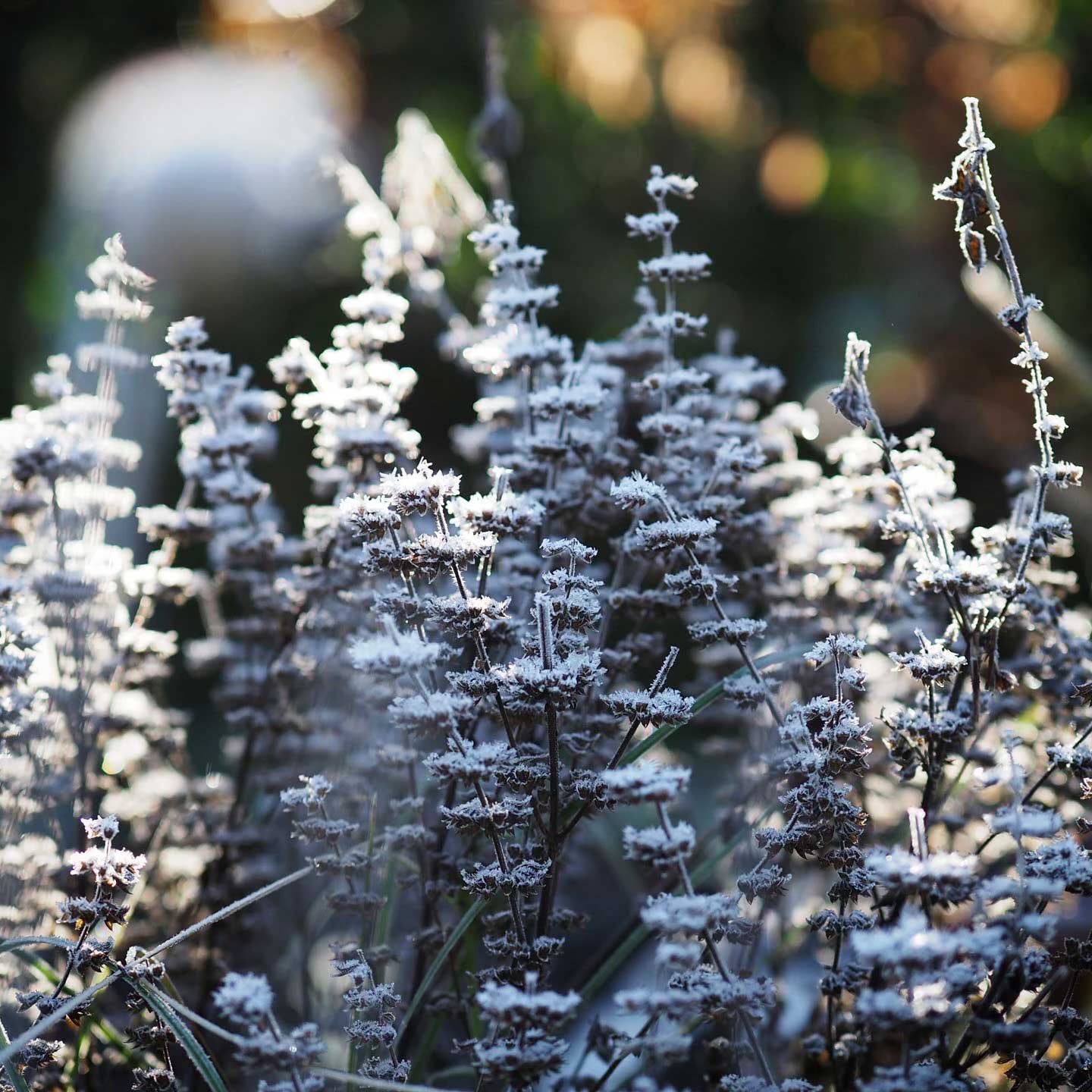I feel sorry for the tidy people. Not that I’m irredeemably messy myself – to the surprise of many even quite close friends, I’m secretly quite organised, though I manage to cover it with an air of enthusiastic bungling. But the tidy folk, when it comes to this time of year, will long ago have put their gardens to bed for the winter, gathered up each stray leaf and snipped off every dead stem at the base. Which is very neat, and very sensible, but leaves precious little opportunity for frost, or spiders, or frost and spiders, to weave their icy enchantments.
Lemon balm (Melissa officinalis) is a familiar herb to many of us – that thing that looks a bit like its relative, the nettle. The family resemblance can be pinned down to the shape of its scalloped-edged leaves and their arrangement in opposite pairs, each at right angles to the previous pair (decussate, in the lingo), as well as the square-profiled stems so characteristic of the Minty-Nettle fam. But, with a flex peculiar to itself, lemon balm when squished smells strongly of the citrus, with an accompanying woody base note. It’s a highly refreshing scent – one of those smells that manages to short-circuit whatever mood you’d gotten yourself into and, sending a shiver down the spine, kick the old parasympathetic nervous system into gear. A sensory reset. The leaves, flung into a french press of boiling water and left to stew for a few minutes, make a calming tea. You know all this, I’m sure. You’ve probably also seen the profusion of tiny, greeny-cream, nectar-rich flowers that make the plant such a favourite with pollinators in summer. And, if you have it in your garden, you’ll be aware how it can seed itself about, popping up in all manner of places where it’s not really wanted (too much of it can be a little visually noisy).
What you might not know, though – especially if you’ve taken the opportunity in autumn either to hoik out unwanted plants, or to cut others down to the ground in order to instill a little discipline – is quite what a contribution they can make to the winter garden. There’s an airy kind of volume held in place by the dead stems with the seed heads and skeletons of last season’s foliage (lemon balm clips well over the growing months, and will hold a rough sphere with relatively little effort from the gardener). Paint the remnants with frost, spray ice crystals over the lot and watch the morning sun slowly rise through it, and you have yourself quite the magical winter display. A thing for which it’s worth resisting the urge to be tidy.







Marvellous! I can't bring myself to grow lemon balm (though some appears, uninvited, here and there) but I do have orange balm and while it will never enter my kitchen, I love its year round presence and the perfume it leaves on my hands. thank you for a fine sunday read
You're going to have to really convince me on this one my friend 🤣 I made the fatal mistake of letting lemon balm get a hold of a bed and am still digging out its woody stems .... BUT, although the taste of the leaves is weird, I'm convinced a 'tisane' with their leaves keeps my hay fever away. I've researched it everywhere and can't find any mention, but it totally works for me and the years I don't do it, I get hay fever....